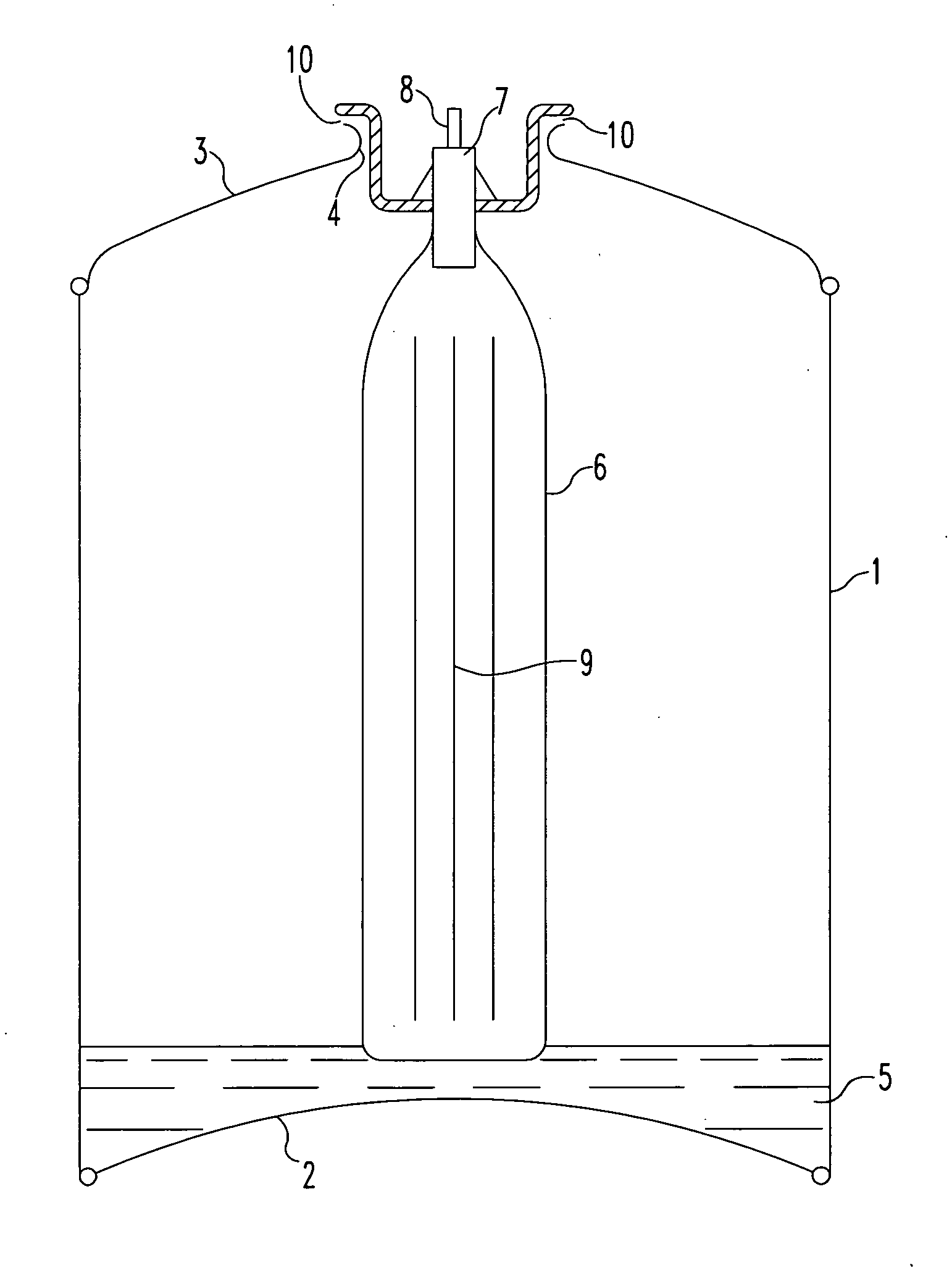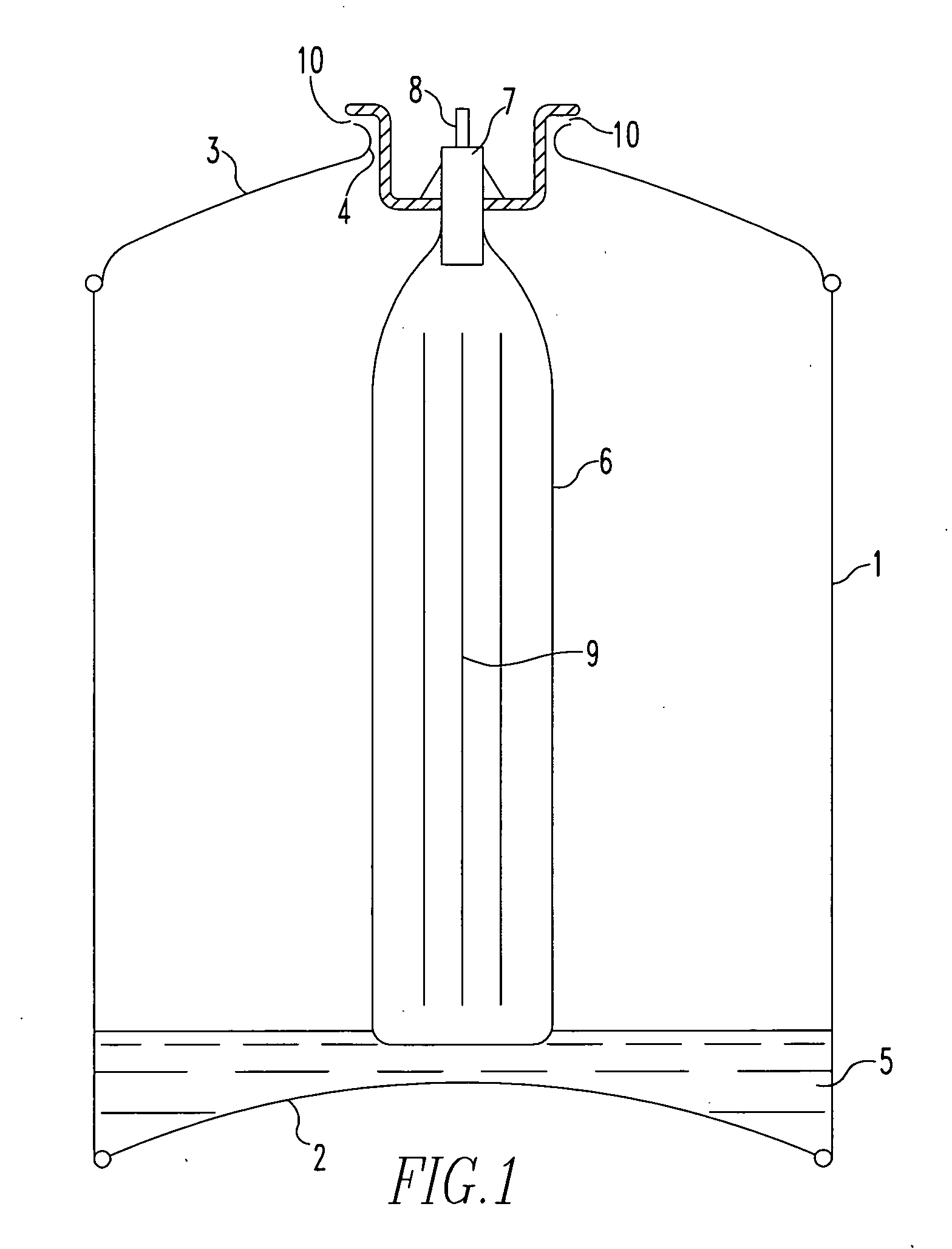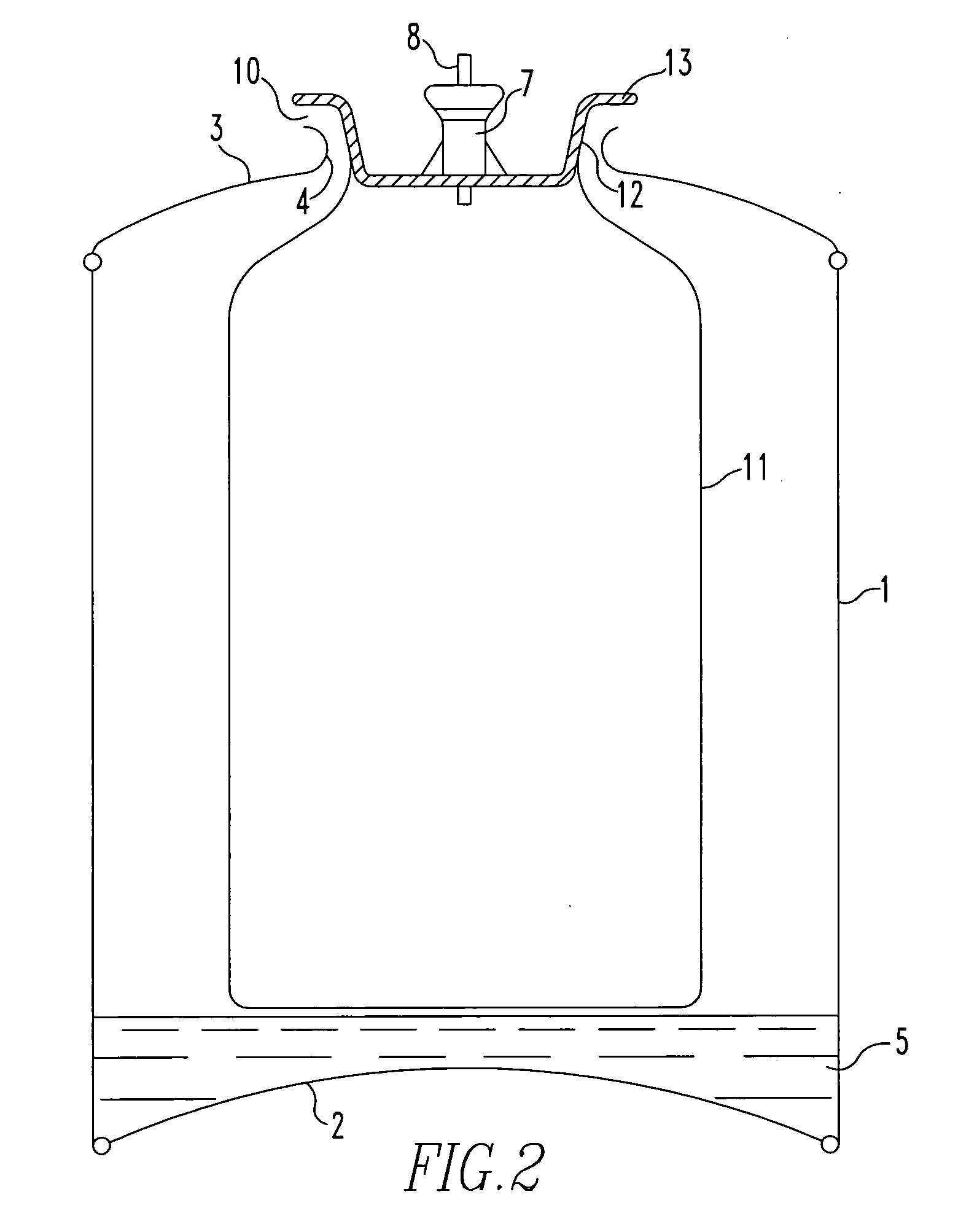Method for manufacturing a product dispensing canister
a technology of product canisters and manufacturing methods, which is applied in the direction of liquid dispensing, packaging under special atmospheric conditions, special packaging, etc., can solve the problems of environmental health hazards, general phase out of propellant gases, and extreme flammability
- Summary
- Abstract
- Description
- Claims
- Application Information
AI Technical Summary
Benefits of technology
Problems solved by technology
Method used
Image
Examples
Embodiment Construction
[0141]With reference to the drawings and to FIG. 1 in particular, there is shown a canister comprising a cylindrical main body 1 having a base portion 2 sealingly attached thereto around its base (as shown) perimeter. A canister top portion 3 is sealingly attached to the main body 1 around its upper (as shown) perimeter and has a centrally positioned aperture 4 therein.
[0142]Situated in the lower part of the body 1 and resting on the base portion 2 is a predetermined amount of activated carbon adsorbent 5 that has been pre-saturated / blanketed with a carbon dioxide atmosphere from the time of its manufacture, i.e. activation, until loaded in to the body 1. The interior of the body 1 has previously been flushed with carbon dioxide in order to dispel at least most of the atmosphere therein just prior to the loading of the carbon absorbent 5 therein.
[0143]A ‘bag-on-valve’6 is shown in the drawing in its position at the time of gasification of the canister together with a valve block 7 (...
PUM
| Property | Measurement | Unit |
|---|---|---|
| Fraction | aaaaa | aaaaa |
| Fraction | aaaaa | aaaaa |
| Fraction | aaaaa | aaaaa |
Abstract
Description
Claims
Application Information
 Login to View More
Login to View More - R&D
- Intellectual Property
- Life Sciences
- Materials
- Tech Scout
- Unparalleled Data Quality
- Higher Quality Content
- 60% Fewer Hallucinations
Browse by: Latest US Patents, China's latest patents, Technical Efficacy Thesaurus, Application Domain, Technology Topic, Popular Technical Reports.
© 2025 PatSnap. All rights reserved.Legal|Privacy policy|Modern Slavery Act Transparency Statement|Sitemap|About US| Contact US: help@patsnap.com



